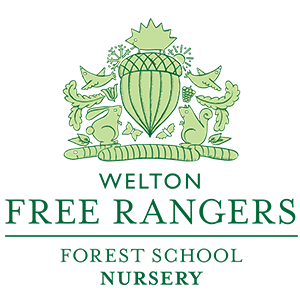Fire lighting has been the focus of Forest School this week at Free Rangers. After the mixed bag of activities I tried last week it was evident the children had a real interest in it, and my observations proved to be correct! Fire lighting is a really intriguing subject to explore with children. I was lucky enough to have an open fire at home growing up and often lit the bonfire as well so it’s great to be able to share these experiences but also further their learning as well. Whilst some children are fascinated by this primordial practice and have already garnered a basic knowledge, others come to this completely fresh. Either way, they are always fascinated by it. I start the session by talking around the subject to see what the children already know. It’s very paramount for me to dispel any myths the children have about fire; it’s important for them to be responsible and safe near fires, but I don’t wish them to feel they can’t come and sit around it. A healthy respect is a good thing.

Next the basics. Why we need fires? What we use them for? How do we make them? We talk about uses for them: for warmth, for cooking, for light, for signals etc, and then look at what a fire needs. Children can tell when they spot a fire, they recognise what it is, but often struggle to understand what is happening. I liken fires to ourselves as it makes it a little easier for the children to comprehend the mechanics. Usually I will build a small fire in the fire pit whilst this is happening, so that our visual and auditory learners are catered for, and the kinesthetic learners help with the building. Fires need 3 things. (Do you know? Answers on a postcard please) They need fuel and air just like we do. The children have snack before they start their session so that’s their ‘fuel’ and they are using air just like fire does too. However as humans we usually don’t need a method of ignition (perhaps an espresso in the morning for some) so that’s usually where the analogy stops. We look at different ways of lighting fires, what fuels are best, and always stress about safety with matches/lighters, especially if they find some at home. We usually work with fire steels which are simply a rod of ferrocerium with a steel striker attached. When struck, they produce very short-lived, very hot sparks we use to light our tinder bundles, which in our case is cotton wool balls. I show them how to fluff up the cotton first as it’s easier to light and show them how to use the steels. Then it’s their go.

These are not easy things to get to grips with, but some children really grasped the technique and showed some real perseverance to light their tinder. Other needed a little help and for me to hold their hands whilst striking. Some were distracted by the inbuilt whistle in the strikers. Whichever way they managed, their faces still lit up with glee when it finally glows and burns. The language the children used to describe what they were seeing was also marvelous. I ask them to tell me what they sense, which allows me to bring in keywords like ember, smoke, charcoal etc. Once they have had a few attempts we introduce kindling and the next challenge for them is to see if they can pass the heat energy from the tinder to the kindling so as to begin their understanding of how heat travels and essentially the way fires generally work. This by no means a one week activity so we will repeating it in the next few weeks so as to continue their learning.
Hope you have all enjoyed your weekends. Thanks for reading!
R. Fox
[nggallery id=23]
